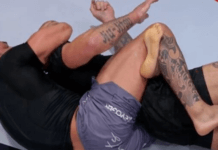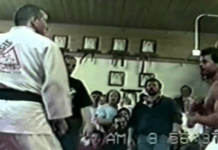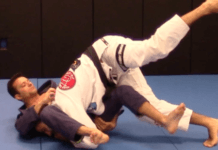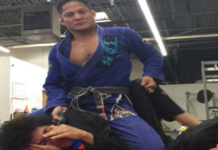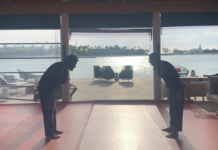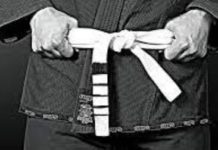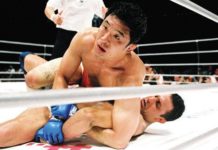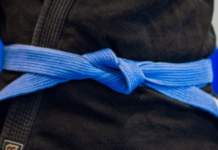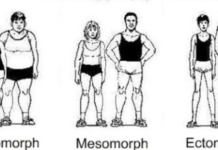Table of Contents
BJJ has many benefits and positives. It is a great way to increase endurance, lose some weight, meet new people, etc. However, as with everything, unfortunately, BrazilianJiu Jitsu also has its drawbacks. The first negatives sides of this sport that comes to your mind are probably some injuries such as back or knee problems. Of course, it happens and its obviously bad side of jiu jitsu but this time we are talking about BJJ skin diseases. Other BJJ Skin problem that you can have (but its not infection) is Mat burn. Below you will find the most common BJJ skin infections and how to prevent and to treat them.
Most common BJJ skin diseases
Unfortunately, you can catch a lot of nasty stuff while training Brazilian Jiu Jitsu. Skin disease comes in many forms. Some of the most common of them that you can get from BJJ are herpes, impetigo, ringworm, and MRSA (staph) infection.
Ringworm
Dermatophytosis, also known as ringworm, is one of a fungal infection of the skin. The name of this disease is a misnomer because it has nothing to do with worms, its a fungus, that causes the infection. The name comes from the skin lesion shape, which looks like a rolled-up worm.
Most of the time ringworm looks like a red, itchy, scaly, circular rash, which can cause also hair loss on the affected area. Moreover, it can attack multiple places on your body at the same time. Symptoms begin four to fourteen days after exposure. It is believed that globally, even up to 20% of the population may be infected by dermatophytosis.
This BJJ skin disease can spread from animals or between people. Obesity, weak immune function, and excessive sweating are conducive to catching it. You are more exposed to ringworm by practicing not only BJJ but generally all contact sports and using public showers or by contact with objects or surfaces that the infected person has touched etc. The best way of avoiding catching it is by keeping the skin dry, not walking barefoot in public, and not sharing personal items.
If you already got it treatment depends on the severity of your ringworm infection. Most of the time antifungal creams, ointments, gels, or sprays will be enough to cure it. However, dermatophytosis of the scalp or nails may require prescription-strength oral medications.
Impetigo
Impetigo is a bacterial contagious skin infection. Its name comes from the Latin word impetere, meaning “to attack.” Typically it attacks face, arms, or legs and looks like yellowish crusts. Impetigo can occur on healthy skin, but mostly it begins in minor cuts, insect bites, or a rash such as eczema. Generally, any place where the skin is broken.
Poor nutrition, diabetes and again contact sport in generall are conducive to catching it. You can get it from touching the sores of a person with impetigo or by using their items like towels, clothes, or sheets. Bacteria thrive in hot, moist conditions. So impetigo tends to be seasonal, peaking in the summer and fall in northern climates. In warm and humid climates, it tends to occur year-round. It is believed every yar it affects around 2% of the population.
To avoid it catching it you should be washing your hands, avoiding infected people and cleaning injuries. Treatment is typical with antibiotic creams. If large areas are affected antibiotics by mouth may be used. With medication, impetigo usually cures in 7 to 10 days. Without it, people typically get better within three weeks.
Herpes Gladiatorum
Although there are several types of herpes you can catch in BJJ herpes gladiatorum, also known as mat herpes is the most typical one for contact sports. It is a common skin condition caused by herpes simplex virus type 1 (HSV-1). It is believed almost 70% of the world population under the age of 50 has HSV-1. Herpes is a highly contagious disease.
Also once you are infected, the virus stays with you forever. Sometimes the virus is just in an inactive and not contagious phase, but you can also have flare-ups at any time. The risk of having an outbreak is higher during stressful periods or when your immune system is weakened during an illness.
It can affect any part of your body and can be transmitted through many different types of skin contact. Symptoms typically resemble 7 days after exposure to the virus. A group of lesions or sores will show up on your skin for around 10 days before healing. Gentle cases of mat herpes may not need any medication. However, you should not touch the sores if they’re still noticeable. Even if your lesions are dry and fading, you may need to avoid any contact that could cause them to flare up. In more serious cases, some prescription medications can help speed up healing time. High hygiene is simply recommended as a preventive measure.
MRSA (Staph) Infection
MRSA is another infection caused by bacteria. It typically occurs when there’s a cut or crack in the skin. It is very contagious and can be spread through direct contact with a person who has the infection. You can also get it from contact with an object or surface that’s been touched by a person with MRSA.
The disease usually creates a swelled, unpleasant bump. It may look like a spider bite or pimple. Usually, it has a yellowish or white center and a center head. Most of the time you can heal it with only oral antibiotics. However, if it is a large infection an incision and drainage might be needed. Prevention from catching it includes hand washing, covering wounds and not sharing personal items.
Preventing BJJ skin diseases
Prevention is the key. In any case, avoiding getting a skin infection is much easier than treating one. So, how can you prevent yourself from contracting one of these nasty diseases? Below you will find a few pieces of advice on what to do to avoid them.
Personal hygiene
This is probably a big obvious or at least it should be – just wash yourself. Personal hygiene is critical here. Remember to wash your hands, especially after using a bathroom, takes showers frequently, change clothes regularly. Keep cuts and abrasions covered during practice. Avoid contact with other person’s wounds. Don’t share towels, clothing or equipment with others.
Use Spats and Rashgaurd
Using BJJ spats and Rashguard is effective against skin infections. This gear provides additional layer of protection because your skin isn’t touching mat directly.
Wash your stuff to prevent infections
This should be a piece of common sense – just don’t forget to wash your gear. Your gis, your rashguards, your shorts, generally whatever you wear on that mats need proper washing. If you don’t do this you are risking getting one of BJJ skin diseases.
Look where you walking
Walking barefoot everywhere is practically asking for some skin infection. If you step into a bathroom without any shoes or socks and after you go on the mat, you are bringing a ton of bacteria with you on your feet which will affect not only you and your training partners. And when it comes to mats, in general, it is good to ask or observe how it is cleaned in your club. If you notice your academy got poor hygiene it is better to change it than risk some skin diseases.
Contact your doctor
If you suspect you have any of these BJJ skin diseases it’s best to contact your doctor. He will know best what exactly you have caught and how to treat it. Aso, don’t forget early reporting and proper treatment of skin lesions is key to preventing it from spreading. So, if you already are infected better stay away from the mat for some time to not affect others.
Conclusion
BJJ skin diseases are nasty and not fun to deal with. It’s best to avoid catching them than curing. Just don’t forget about common sense and follow good hygiene and you should be fine.


